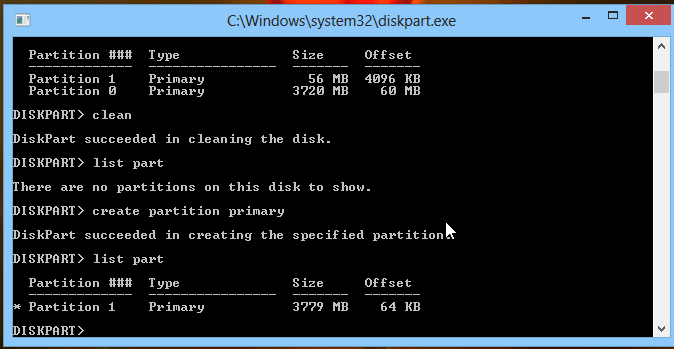FAT32 is the oldest of the three file systems available to Windows. It was introduced all the way back in Windows 95 to replace the older FAT16 file system used in MS-DOS and Windows 3. Visual boy advance source. Historical and licensing information. Originally MS-DOS was designed to be an operating system that could run on any computer with a 8086-family microprocessor.It competed with other operating systems written for such computers, such as CP/M-86 and UCSD Pascal. The exFAT file system is the successor to FAT32 in the FAT family of file systems. This specification describes the exFAT file system and provides all the information necessary for implementing the exFAT file system. 1.1 Design Goals. The exFAT file system has three central design goals (see list below). Retain the simplicity of FAT-based file. The FAT32 file system is a mature file system, which is an improved version of the original FAT file system used in the MS DOS operating system. Later, Microsoft introduced the NTFS file system, which improved the performance and reliability of file operations. DOS utilities (MS-DOS, FreeDOS, etc.) If you have a DOS utility such as a BIOS Flash utility or small DOS-based diagnostic.exe file, you can try using the E2B FreeDOS bootable image. This image contains an NTFS driver and so you can directly access files on a FAT32 or NTFS E2B drive.
FAT32 is an improved version of the File Allocation Table (FAT) file system. FAT32 originally appeared in Windows 95 OEM Service Release (OSR) 2. FAT32 uses smaller clusters than FAT16 drives do, thus using space more efficiently on larger disks (disks larger than 1GB in size). You can also use FAT32 to format disks larger than 2GB as a single drive.
| Drive size | Cluster size |
| 256MB - 511MB | Not supported |
| 512MB - 8GB | 4KB |
| 8GB - 16GB | 8KB |
| 16GB - 32GB | 16KB |
| > 32GB | 32KB |
FAT32 drives have a different on-disk format than FAT16 drives. To date, most disk utilities, including those from all the major vendors, have already been revised to work on FAT32 volumes. The disk utilities included with Windows 98 have been revised to include FAT32 support, in particular: Fdisk, Format, ScanDisk, Defrag, and DriveSpace. However, DriveSpace does not and will not support compressing FAT32 drives.

The Save to File (Hibernate) feature may be incompatible with FAT32.On computers containing a BIOS made by Phoenix Technologies, you might not be able to use the Save to File feature if your primary (boot) drive is formatted using FAT32. If your PhDISK utility is earlier than version 5.0, you must obtain an updated version of the utility and an updated ROM BIOS from your computer manufacturer in order to use a Save to Disk file. With older versions of the ROM BIOS, your computer may be unable to start if it tries to read a Save to Disk file from a FAT32 drive. If this occurs, you must disable the Save to File feature in your ROM BIOS. This does not affect computers using a disk partition to store the Save to Disk data.
Ms-dos Fat32 Mac Os
Converting a drive to FAT32 in place is a safe, fast operation using the build-in graphical FAT32 conversion utility (Note: Drive Converter will not work on drives under 512Mb). It typically takes only a few minutes. After you run the Drive Converter, Defrag runs on that drive during your next startup. It may take several hours to defragment your drive.
Note: Running Defrag to completion after converting to FAT32 is important. Not defragmenting your disk after converting to FAT32 will result in a less effecient (slower) computer. Dragonvale world fire dragon.
There are three ways to enable FAT32:
- Convert an existing FAT16 drive in place.
Click Start > Programs > Accessories > System Tools and click Drive Converter (FAT32).
- Set up Windows 98 on an empty, un partitioned disk.
Start your computer from a floppy disk and then run Oemsetup.exe (not Setup.exe).
- Run Fdisk on a disk larger than 512MB.
An Fdisk prompt gives you a choice to enable large disk support. If you click Yes, any partitions you create that are larger than 512MB are marked and formatted as FAT32 partitions. (You cannot install FAT32 on a disk smaller than 512MB.)
Note: Windows 98 does not include a utility for converting a drive back to FAT16 after it is converted to FAT32. However, several third-party utility products do support converting back to FAT16 from FAT32.
Dual booting
You cannot dual boot a FAT32 computer with Windows 98 and another operating system such as the original release of Windows 95, Windows NT, Windows 3.x, or MS-DOS 6.x. Terran build order brood war. Other operating systems cannot access a FAT32 partition because older operating systems do not recognize the new data structures.
Ms-dos Fat32 File Size Limit
You can dual boot Windows 98 with another operating system if drive C is FAT16. However, if you have other FAT32 partitions, they will not be visible to operating systems other than Windows 98. Windows 98 supports dual-booting between Windows 98 and earlier MS-DOS operating systems such as MS-DOS 6.22 if you are using FAT16.
And don't forget to Create a Startup Disk with FAT32 Support.
Note: If you work a lot in real-mode MS-DOS, FAT32 is considerably slower than FAT16. Loading Smartdrv.exe in your Autoexec.bat or MS-DOS.PIF file will be beneficial.
Microsoft has a handy utility [40KB] to see just how much space you could gain by converting to the FAT32 file system.
14 July 1998
